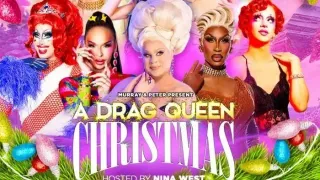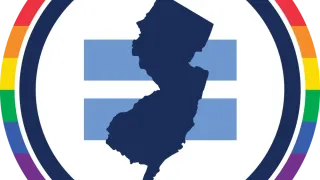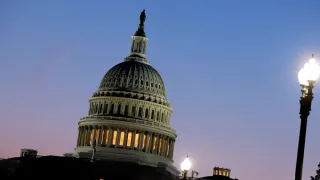October 10, 2017
For LGBTQ History Month, Welcoming the Archives of Rainbow Flag Creator Gilbert Baker
READ TIME: 3 MIN.
By Mark Sawchuk
A legend in the LGBTQ community, Gilbert Baker (1951-2017) was an American artist and activist famed for creating the rainbow flag, which debuted at the San Francisco Gay Freedom Day Parade in 1978. Now an internationally recognized symbol of the queer community, the flag also is an icon of contemporary design, with examples held by New York City's Museum of Modern Art and other major collections. During his lifetime, Baker traveled widely to promote the flag and to work for social justice.
Shortly after Baker's death in March of this year, his estate selected the GLBT Historical Society to preserve his archives, art and memorabilia. As the society prepares to posthumously honor Baker with its annual History Maker award at the Living Colors gala on October 14, History Happens sat down with the society's managing archivist, Joanna Black, to learn more about this exceptional addition to the archives.
Sawchuk: How did the GLBT Historical Society come to acquire the Gilbert Baker collection?
Black: A couple of Baker's close friends contacted the society and inquired whether we would be interested in a donation. Of course we jumped at the chance, as this is a highly sought-after collection. When I met them at Baker's apartment in New York, it was an emotional experience for all of us to go through his belongings. I felt so honored to be there and really felt his presence throughout the process.
Sawchuk: What specific items does the collection contain and what do they tell us about a man who was a monumental figure in modern LGBTQ history?
Black: Baker's rainbow flag has become universalized as a symbol of tolerance, unity and love. The collection contains plenty of flag-related materials, including documentation about two of the longest rainbow flags ever sewn, rainbow textiles and fabric scraps, all of which show his dedication to his craft as a vexillographer (someone who designs flags). My favorite item is the last sewing machine he owned, which is a companion piece to the one we already have that was used to sew the two original flags in 1978.
What's also wonderful about this collection is that there's lots of material about other aspects of Gilbert Baker's life. We have private writings, correspondence with close friends, fabric protest signs, photographs, AV materials, awards and his drag outfits. He was involved in many political campaigns and was a genius at stirring people up to create positive change.
Perusing this collection gives you a much more well-rounded sense of who he was. You see his colorful, theatrical side and his engagement as an artist and an activist. It proves that his commitment to social justice transcended the flag, even if that will always remain his best-known work.
Sawchuk: How is the society handling the collection, and when will it be available to researchers?
Black: It's difficult to give a precise date because this was a logistically challenging acquisition. Accessioning new collections happens in several steps. We're nearing the end of the first phase, which is surveying it and making sure the fabric items are properly conserved. The next step, the processing phase, will take several months and involves creating a detailed inventory that provides context for the materials and a guide for researchers. This collection is complex and involves a lot of stakeholders, including Gilbert Baker's heirs. We're hoping to make some of the collection available to researchers in the second half of 2018.
Mark Sawchuk is a member of the Communications Working Group of the GLBT Historical Society.
For more information, visit www.glbthistory.org/archives






